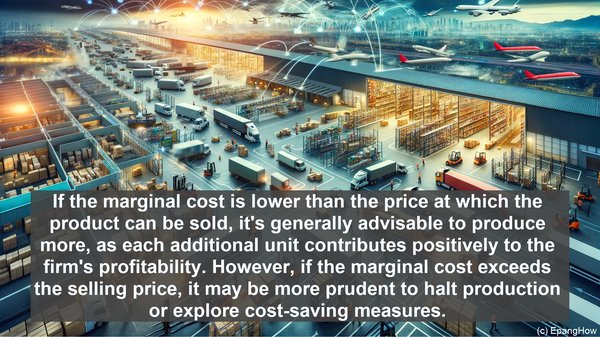Introduction: The Cost Landscape
Hello everyone! Welcome to today’s article, where we’ll be exploring the fascinating world of production costs. When it comes to running a business, understanding the intricacies of costs is vital. Today, we’ll be focusing on two key cost measures: marginal cost and average cost. While they may seem similar at first, they have distinct characteristics that can significantly impact a company’s bottom line. So, let’s dive in!
Defining Marginal Cost
To grasp the concept of marginal cost, we need to start with the basics. Marginal cost refers to the change in total cost that occurs when one additional unit of output is produced. In simple terms, it’s the cost of producing one more item. For instance, if a company produces 100 units of a product and incurs a total cost of $10,000, and then decides to produce 101 units, resulting in a total cost of $10,200, the marginal cost for that additional unit is $200. It’s important to note that marginal cost can vary at different levels of production.
Understanding Average Cost
On the other hand, average cost provides an overall picture of the cost per unit of output. It’s calculated by dividing the total cost by the total number of units produced. For example, if a company incurs a total cost of $10,000 for producing 100 units, the average cost per unit would be $100. Unlike marginal cost, which focuses on the incremental cost of producing one more unit, average cost considers the average expenditure across all units produced.
The Relationship: Marginal Cost and Average Cost
While marginal cost and average cost are distinct measures, they are interconnected. In fact, the relationship between the two is crucial in understanding a firm’s cost structure. When marginal cost is below average cost, it pulls the average cost down. Conversely, when marginal cost exceeds average cost, it pushes the average cost up. This relationship is due to the nature of cost curves, which we’ll explore in a moment.

Cost Curves: Visualizing the Relationship
To better comprehend the relationship between marginal and average cost, let’s visualize it using cost curves. The marginal cost curve typically starts from the lowest point of the average variable cost curve and intersects the average total cost curve at its minimum. This intersection point is where marginal cost equals average cost. As production increases, the marginal cost curve tends to rise, eventually intersecting the average cost curve at its peak. This signifies that the marginal cost is higher than the average cost, leading to an upward shift in the average cost curve.
Implications for Decision-Making
The distinction between marginal cost and average cost is not just theoretical; it has practical implications for businesses. When considering whether to increase production, a firm must assess the marginal cost. If the marginal cost is lower than the price at which the product can be sold, it’s generally advisable to produce more, as each additional unit contributes positively to the firm’s profitability. However, if the marginal cost exceeds the selling price, it may be more prudent to halt production or explore cost-saving measures.

